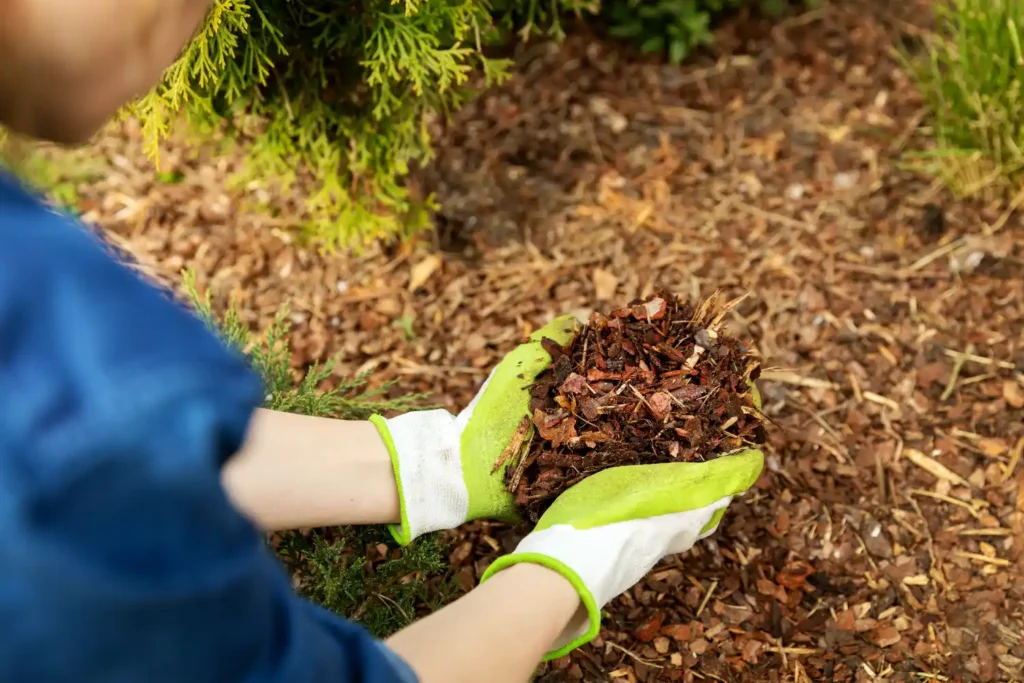Mulch is a valuable addition to any garden, helping to retain moisture, suppress weeds, and regulate soil temperature. However, it doesn’t last forever. Over time, mulch breaks down, loses its effectiveness, and needs to be replaced. Knowing how long different types of mulch last and understanding the factors that affect their lifespan can help you keep your landscape healthy and visually appealing year-round.
Understanding Mulch Longevity
The Life Expectancy of Mulch
The durability of mulch depends on the materials used, weather conditions, and how well it is maintained. Organic mulches such as wood chips, bark, and straw naturally decompose, usually lasting anywhere from six months to two years. Inorganic mulches, including gravel, rubber, and stones, don’t break down similarly but may require occasional replenishing or cleaning to stay effective.
The Lifespan Equation
Several factors determine how quickly mulch deteriorates. These include moisture levels, exposure to sunlight, and foot traffic. Additionally, the type and quality of mulch play a role—denser mulch lasts longer. At the same time, finer, shredded options break down faster. You can extend its usefulness by choosing the right mulch and taking care of it properly.
Factors That Affect Mulch Lifespan
Material Matters: Different Types of Mulch and Their Durability
- Organic Mulch:
- Bark mulch: Typically lasts 1-2 years, decomposes gradually, and enriches the soil.
- Wood chips: Lifespan varies from 6 months to 2 years, depending on size and exposure.
- Straw: Breaks down quickly, lasting about 3-6 months, but improves soil texture.
- Pine needles: Can last up to 2 years and help acidify the soil.
- Inorganic Mulch:
- Rubber mulch: Lasts over 10 years, is resistant to decomposition, but does not improve soil quality.
- Gravel or stones: Permanent but may need occasional maintenance to stay neat.
Environmental Influences: How Weather and Climate Impact Mulch
Mulch longevity is heavily influenced by its surroundings. Heavy rainfall can wash away lighter mulches, while extreme heat speeds up decomposition. In colder regions, freeze-thaw cycles may cause mulch to break apart. Regular inspection and minor adjustments can help mulch last longer in different climates.
Signs That Your Mulch Needs Replacing
Fading or Discoloration
Sunlight exposure and weathering can cause the mulch to lose its rich color, turning it gray or dull. While this doesn’t affect its functionality, faded mulch may not provide the same aesthetic appeal and could indicate aging material.
Decomposition and Breakdown
Organic mulch gradually turns into soil. If you notice it thinning out, becoming powdery, or blending too much with the earth, it’s a sign that new mulch is needed.
Compaction and Poor Drainage
Over time, mulch can become compacted, restricting airflow and water penetration. If water sits on the surface instead of soaking in, it’s time to rake or replace the mulch to improve drainage and soil health.
How to Maintain Your Mulch for a Longer Lifespan
The Art of Maintenance
Simple steps to maintain mulch can extend its lifespan and keep it functional longer.
Monitor Thickness
Maintain a mulch layer of about 2-3 inches. Too little mulch won’t effectively suppress weeds or retain moisture, while too much can suffocate plant roots.
Ventilate to Prevent Mold Growth
Damp mulch can develop mold or fungal growth. Raking it occasionally helps improve airflow and prevents excessive moisture buildup.
Refresh Color for Aesthetic Appeal
If your mulch has faded but hasn’t decomposed significantly, turning it with a rake can bring back some of its original vibrancy. Adding a thin layer of fresh mulch can also restore its appearance.
When and How to Replace Mulch
Best Time of Year to Replace Mulch
The ideal time to refresh or replace mulch is spring and fall. Spring mulching helps with moisture retention and weed control for the growing season. In contrast, fall mulching insulates plant roots before winter.
Steps for Proper Mulch Replacement
- Remove old mulch: If it has decomposed significantly, clear it out to prevent excessive buildup.
- Prepare the area: Remove weeds and loosen the soil to ensure proper moisture absorption.
- Apply new mulch: Spread a fresh 2-3 inch layer, keeping it a few inches away from plant stems and tree trunks.
- Water lightly: Moistening the mulch helps it settle and integrate with the soil.
Frequently Asked Questions
How often should mulch be replaced?
Organic mulch should be replenished every 1-2 years, depending on its breakdown rate and environmental conditions. Inorganic mulch lasts much longer but may require occasional upkeep.
What mulch lasts the longest?
Among organic options, cedar, and pine bark last the longest, typically up to 2 years. Inorganic mulches like rubber and gravel can last indefinitely with proper maintenance.
Does mulch type affect plant health?
Yes, mulch influences soil moisture, temperature, and nutrient levels. Organic mulch benefits soil by adding nutrients as it decomposes. In contrast, some treated or dyed mulches may contain chemicals that could impact plant growth.
Can mulch attract pests?
Certain organic mulches, such as wood chips and straw, can attract termites, ants, and rodents. Keeping mulch a few inches away from home foundations and choosing pest-resistant options can help prevent issues.
Can you put new mulch over old mulch?
Adding fresh mulch to existing mulch is common practice, provided the old layer is not overly compacted or decomposed. If the old mulch has broken down significantly, removing it before applying a new layer is the best approach.
Conclusion:
Understanding what affects mulch longevity and following maintenance best practices ensures your garden stays healthy and visually appealing throughout the year. Proper upkeep will maximize the benefits of organic or inorganic mulch and keep your landscape in top condition.




